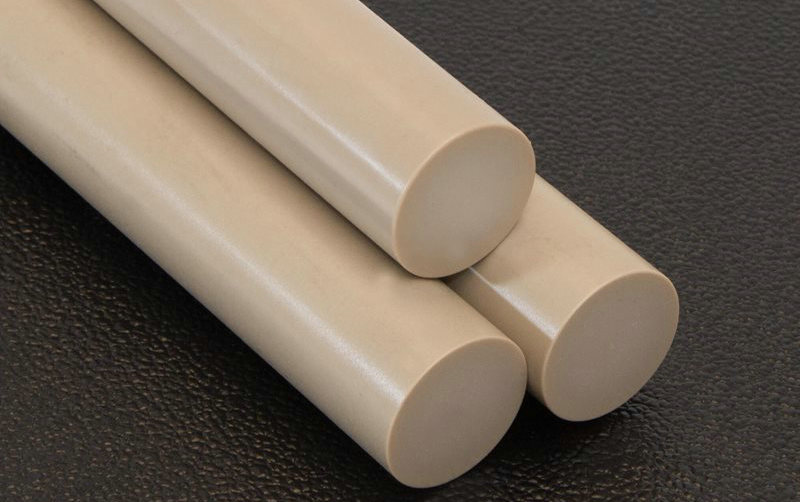
Glass-reinforced PEEK is a high-performance thermoplastic material that is enhanced with glass fibers to improve its mechanical and thermal properties.
Here are some key characteristics and benefits:
High Strength and Stiffness: The addition of glass fibers significantly increases the strength and stiffness of PEEK, making it suitable for applications that require high mechanical performance.
Excellent Thermal Stability: Glass-reinforced PEEK maintains its mechanical properties at high temperatures, often up to 250°C (482°F).
Chemical Resistance: Like standard PEEK, the glass-reinforced variant is highly resistant to chemicals, including acids, bases, and organic solvents.
Wear and Abrasion Resistance: It has excellent wear and abrasion resistance, making it ideal for demanding environments.
Dimensional Stability: The material exhibits low creep and excellent dimensional stability under load and temperature variations.
Flame Retardant: Glass-reinforced PEEK is inherently flame retardant and produces very little smoke and toxic fumes when exposed to fire.
Common Applications
Due to these properties, glass-reinforced PEEK is used in a variety of high-performance applications, including:
Aerospace components
Automotive parts
Medical devices
Electrical and electronic insulation
Industrial machinery parts
Types of Glass Reinforcement
Glass reinforcement in PEEK can come in different forms, such as:
Short Glass Fibers: Provide good mechanical properties while maintaining ease of processing.
Long Glass Fibers: Offer superior mechanical properties but can be more challenging to process.
Processing Methods
Glass-reinforced PEEK can be processed using common thermoplastic techniques such as injection molding, extrusion, and compression molding. Care must be taken during processing to ensure the fibers are well-dispersed and oriented properly to achieve the desired material properties.
What is PEEK glass?
PEEK Glass Filled. PolyEtherEtherKetone (PEEK), a high performance engineering thermoplastic, offers chemical and water resistance similar to PPS (PolyPhenylene Sulfide), but can operate at higher temperatures. The general purpose grade is unreinforced and offers the highest elongation and toughness of all PEEK grades.
What is the difference between glass filled PEEK and PEEK?
Glass-filled PEEK offers more stiffness than unfilled PEEK and is often used in the oil and gas industries to ward off poor reactions to steam, chemicals, and high temperatures. One disadvantage of glass-filled PEEK is its tendency to wear down mating parts.
What's the percent of glass reinforced in PEEK?
The most common is 30%, but 20-60% is also available.
Can you machine glass-filled PEEK?
While most plastics can be machined with HSS (high-speed steel) cutters, glass-filled peek need cutters made from carbide (or even ceramic) to counteract the abrasiveness of the glass. Heat is another issue when machining glass-filled PEEK.